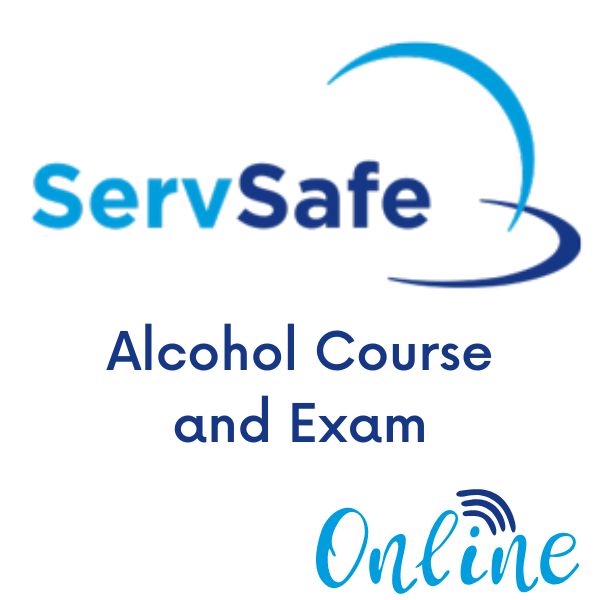Comprehending the Function of a ServSafe Food Handler in Ensuring Food Safety Criteria
Comprehending the Function of a ServSafe Food Handler in Ensuring Food Safety Criteria
Blog Article
Comprehensive Food Handlers Training for Health and Security
In today's quickly evolving food solution landscape, comprehensive food trainers training has actually arised as an essential part for ensuring health and safety. By instilling necessary practices related to hand hygiene, food storage, and hygiene, this training not only mitigates the risk of foodborne illnesses yet additionally strengthens conformity with regulative criteria. The ramifications of such training expand beyond mere conformity; they touch upon public wellness and consumer trust. Yet, the effectiveness of these training programs can differ dramatically. What factors genuinely establish their success in cultivating a culture of security?
Value of Food Security Training

In addition, food safety and security training aids to guarantee that staff members recognize existing regulations and guidelines, which are essential for preserving operational licenses and avoiding pricey penalties. Routine training sessions additionally serve as a platform for strengthening ideal practices, consequently lowering the likelihood of human error, which usually acts as a leading cause of food contamination.
Additionally, buying food safety training can improve a facility's reputation, as customers progressively focus on eating experiences that reflect high safety requirements. Such positive actions not just protect consumers but also add to the lasting success of food organizations. In recap, comprehensive food safety training is an important aspect of food service operations, straight impacting both public wellness and service sustainability.
Trick Concepts of Health
Preserving high standards of hygiene is important in any food handling environment to avoid contamination and ensure the safety of customers. The vital concepts of health include a number of vital practices that food handlers have to continually use.
First, hand health is critical; food handlers need to clean their hands completely with soap and water before and after handling food, as well as after making use of the bathroom or touching any possibly infected surfaces. Tools and surface areas must be on a regular basis cleaned up and sanitized to remove microorganisms. This includes tools, cutting boards, and kitchen counters, which ought to be preserved in a clean problem.


Correct food storage is additionally crucial; raw foods ought to be saved individually from cooked or ready-to-eat products to avoid cross-contamination. servsafe. Additionally, keeping suitable temperature level controls is vital; perishable things should be maintained safe temperature levels to hinder bacterial development
Lastly, individual hygiene can not be neglected. Food trainers ought to use tidy clothes, usage hair restraints, and stay clear of working when ill. By adhering to these essential concepts of health, food trainers can considerably lower the risk of foodborne ailments and promote a more secure dining experience for all customers.
Usual Foodborne Diseases
Although lots of foodborne illnesses can be avoided via correct hygiene and secure food dealing with techniques, they continue to be a significant public health and wellness problem. Foodborne pathogens can result in a range of diseases, varying from light stomach distress to severe problems and even fatality.
Typical foodborne ailments include salmonellosis, triggered by Salmonella germs, commonly connected to undercooked fowl and eggs. Another prevalent disease is listeriosis, connected with unpasteurized milk products and ready-to-eat meats, which can be particularly dangerous for pregnant women and immunocompromised individuals. Norovirus, servsafe certifications frequently contracted from infected food or surfaces, is understood for its fast spread and capacity to cause break outs in common settings.
Escherichia coli (E. coli) infection, especially connected with undercooked hamburger and polluted produce, can result in severe abdominal pains and kidney failing in some instances. Furthermore, Clostridium perfringens, commonly discovered in big quantities of food that are improperly saved, can create food poisoning with symptoms showing up soon after usage.
Understanding these illnesses is crucial for food trainers, as understanding can considerably minimize the danger of contamination and protect public wellness. Appropriate education and training are essential parts in combating foodborne illness.
Ideal Practices for Food Handling
Reliable food taking care of methods are important in preventing the spread of foodborne ailments. Proper hand health is essential; food handlers have to wash their hands extensively with soap and water prior to and after handling food, specifically raw meat or poultry. This simple action considerably minimizes the danger of cross-contamination
Secondly, preserving proper food storage temperatures is essential. Subject to spoiling products need to be kept at or listed below 40 ° F(4 ° C) to inhibit microbial development. Furthermore, prepared foods should be kept over 140 ° F(60 ° C) till served.
Thirdly, making sure tidiness of surface areas and equipment is critical. Frequently disinfect kitchen counters, cutting boards, and utensils, especially after preparing raw foods. Usage separate cutting boards for ready-to-eat and raw foods to better minimize contamination risks.
Furthermore, when preparing food, it is crucial to follow the principle of "first in, first out" (FIFO) to manage supply properly and reduce wasting. Constantly adhere and review to food item tags for risk-free cooking temperatures and handling instructions. By implementing these ideal techniques, food handlers can dramatically boost food security and safeguard public health.
Applying a Safety And Security Culture
Creating a safety and security society within a food taking care of atmosphere is vital for fostering a dedication to food security among all team member. This society highlights the importance of food safety and security as a common obligation, motivating employees to focus on hygiene techniques regularly.
To implement a safety and security culture, organizations must begin by supplying extensive training that addresses food handling procedures, potential dangers, and the value of individual hygiene. Training sessions need to be interactive and tailored to the details functions of personnel, making certain importance and interaction.
In addition, leadership plays a crucial function in developing this culture. Administration should model secure methods and connect the importance of food security routinely. Identifying and rewarding employees that promote safety standards can additionally enhance these behaviors.
Furthermore, open interaction networks must be established, enabling team to report safety and security problems without fear of repercussion. Regular security audits and feedback sessions can aid determine locations for improvement and strengthen accountability.
Eventually, growing a safety and security culture not only boosts compliance with food safety policies however likewise secures public health and wellness, promotes worker morale, and contributes to the total success of the food taking care of establishment.
Conclusion
To conclude, comprehensive food handlers training plays a pivotal function in promoting health and safety within food service facilities. By equipping employees with important knowledge regarding food security concepts, typical foodborne illnesses, and finest practices for taking care of food, such training significantly reduces health and wellness dangers. Cultivating a culture of safety improves the establishment's online reputation and straightens with customer assumptions for high security requirements, inevitably contributing to public health security and the overall success of the food solution market.
In today's rapidly advancing food service landscape, thorough food handlers training has actually emerged as a critical element for guaranteeing health and safety.Food security training is essential for keeping high standards in food handling and prep work, with studies suggesting that correct training can decrease foodborne health problems by up to 30%. In summary, detailed food safety and security training is a vital element of food service procedures, straight impacting both public health and wellness and organization sustainability.

Report this page